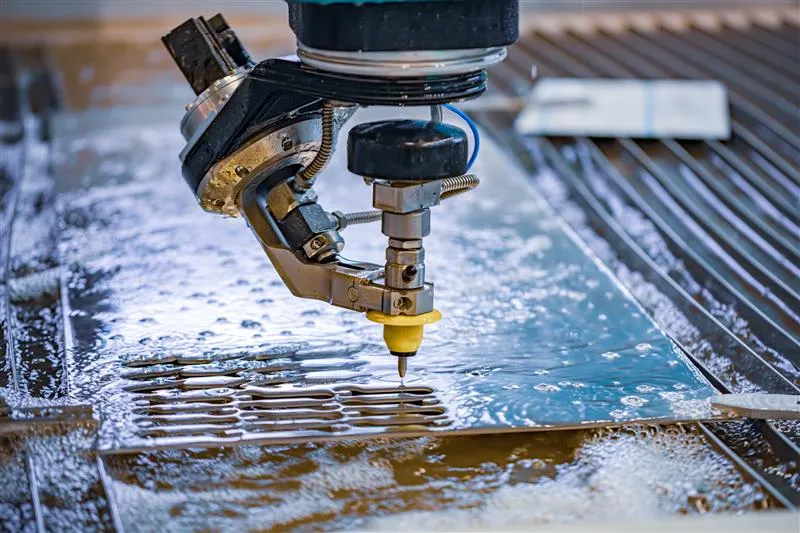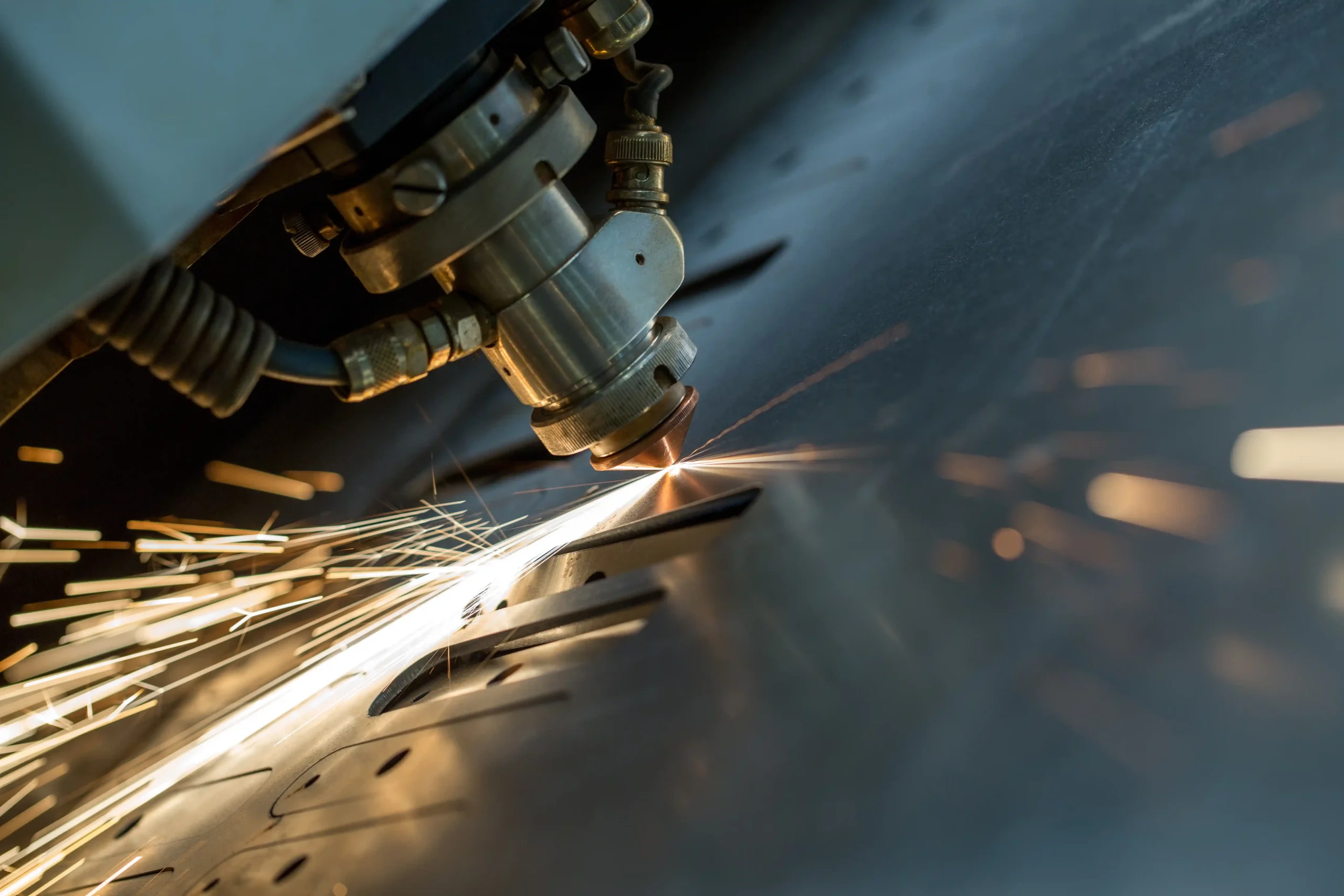The number one essential requirement in automotive manufacturing technology is precision.
For vehicles to perform safely, all parts must be produced accurately to design specifications for proper fitting. As a car manufacturer, you need to find methods to help you achieve the highest level of precision to stay competitive.
In this blog, we will explore why laser cutting is the most effective modern method of producing a variety of automotive parts.
Non-Contact Cutting a Game-Changer for Automakers
The methods of producing parts that go into a vehicle have been constantly evolving. Mechanical cutting, forging, extrusion, and stamping have been among the main industrial processes in auto manufacturing.

Yet if you are using conventional cutting methods in your auto manufacturing processes, you know the pain points. They often produce defective parts and result in material loss when part specifications are not met – costing the company time and money.
Furthermore, consumables like blades, cutting bits, and machine oil add to the manufacturing costs, as frequent maintenance and component replacements come in tow. When tools need to be changed out due to wear and loss of precision, this leads to more downtime.
In addition, post-machining surface treatment is required. This includes the removal of oils – a difficult and time-consuming process, which must be done effectively to avoid flaws in the part’s finish. And in industrial manufacturing, the adage “time is money” truly applies.
Further, advances in metallurgy paved way for the introduction of new alloys and materials into vehicles – which caused manufacturers to seek alternative machining techniques.
That is why non-contact laser processing became a game-changer for automakers.
Automotive laser cutting boosts precision and speed significantly and provides numerous other benefits.
Hitting Quality Standards With Automotive Laser Cutting
Laser cutting offers significant advantages in terms of edge quality. Whereas mechanical methods often leave rough edges or burrs and deform the material under physical stress, laser cutting is a non-contact, thermal process. It minimizes the need for part finishing as the edges are much smoother than with mechanical cutting methods. This also makes for safer parts handling by your workers.

Laser processing offers greater design flexibility. A custom-designed part with complex curves and multiple angles can now be cut out of sheet metal in a single pass. The production of parts in small quantities for prototype, customization, or testing purposes is now much easier and cost-effective.
Overall, the automotive laser cutting process is highly precise, allowing uniform cutting to exact tolerances.
Industry standards dictating these tolerances and specifications are in place; these are the ASTM in North America and the ISO and IATF used worldwide. These provide the dimensions and shapes of the components and test for safety, durability, material properties, and performance, as well as promote defect reduction and waste elimination.
The capabilities of laser cutting technology will help you easily meet these requirements.
No Precision Like Laser Precision
What makes laser cutting so precise?
The cutting in a laser system such as the Titan Express (STIF-3020) by Laser Photonics is done by a high-power beam of infrared light. Achieving a maximum cutting speed of 150 meters per minute and 0.01-millimeter positioning accuracy, the laser beam swiftly ablates and melts away the material at the cut line, separating intricate shapes out of sheet metal. The path of the beam is guided by a computer program with easy-to-use CAD software, while the process can be observed through the safe viewing window.
The lasing settings are highly controlled and adjustable to various materials, with some laser types being more effective for certain materials than others. Our SaberTech Titan series is best suited for sheet metal, engineered with our advanced Turbo Piercing technology to produce a low heat affected zone (HAZ) near the cut line.
For other materials used in auto manufacturing like plastic, glass, and textile, we offer the SaberTech SBM (STPC-1010) CO2 laser cutting product. This would include applications like engraving brand logos and part identification on plastic covers and precision-cutting vinyl, upholstery, and carpeting fabrics. The added benefit of laser-cutting textile is the prevention of fraying prior to stitching and assembly.
Laser Focus – Your Competitive Edge
With your competitive edge determined by the manufacturing process, your company can increase its product quality and cost savings with laser cutting. Many automotive manufacturers have already chosen high-power laser systems for reasons of speed, safety, and precision.
To name a few, there is Honda Motor, which developed its own laser system to speed up mass production. Ford used lasers to cut hot-formed boron steel to make its cars safer, while Tesla worked with Germany’s Schuler to build a laser cutting booth to precisely cut high-strength steel coils for the Cybertruck exterior.
Now, it is your turn to enhance your auto manufacturing processes with laser technology.
To recap, here are some of the main advantages you get when transforming your operations and achieve cost-effective production with laser cutting systems:
Boost in Efficiency
Laser cutting eliminates wear of cutting tools, reduces maintenance and labor. The technology’s fast operation enables manufacturers to boost production rates without the necessity of expanding their workforce. Automotive laser cutting technology also allows users to produce parts from lighter materials, which can increase the fuel efficiency of a vehicle.
Precision & Quality
A non-contact and highly precise process, laser cutting produces high-quality, complex parts repeatably and uniformly. The HAZ is minimized by advanced laser technology, while assist gases in a laser cutting system help remove molten metal and reduce oxidation, providing for a cleaner edge.
Long-Term Cost Savings
The long-term savings of laser cutting technology are significant, although the initial investment in the equipment may be higher than traditional cutting equipment. The technology’s capability to quickly cut custom parts with complex shapes without costly retooling further improves cost-effective production.
Minimized Material Loss
Automotive laser cutting technology enhances material utilization with precise cuts in intricate areas and geometries. Having a smaller cut width, low mechanical distortion, and tighter tolerances, parts can be cut in proximity, which maximizes the use of raw materials and minimizes waste.
Application Versatility
Laser cutting allows automakers to easily customize products, meet specific customer demands, and adjust swiftly to market changes. This adaptability provides a significant competitive advantage in the industry.
Final Thoughts
Are you looking to meet industry regulations and increase precision, speed, safety, and cost-effectiveness while adding a competitive edge to your manufacturing processes? Laser cutting has emerged as a go-to modern automotive manufacturing technology for automakers around the world for the efficient, automated processing of a wide range of materials. Find out if laser cutting is right for you!
Schedule a Call With a Laser Specialist